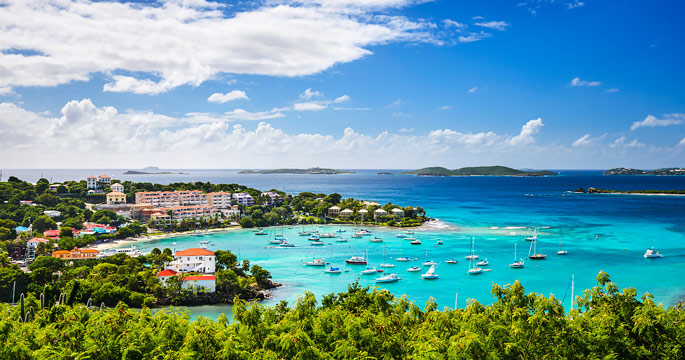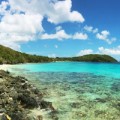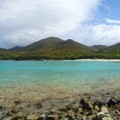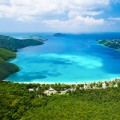The smallest of the U.S. Virgins, St. John offers a more intimate and natural take on island life. It is just nine miles long by five miles wide, but rolling hills, contorted coastlines and winding roads make it appear to be much larger. There is only one town, and two-thirds of the island is owned by the National Park Service, ensuring that beaches are kept free of large resorts, and hillsides are laced with hiking trails rather than freeways.
1 Beach Time
The beaches along St. John’s north shore are among the most beautiful in the world. In postcard-perfect settings, sheltering bays of sparkling turquoise waters meet soft white sands lined with coconut palms and sea grape trees. Because these beaches lie within a national park, there are no high-rise hotels to mar the view. At famous strands such as Trunk Bay, Hawksnest and Cinnamon, its best to arrive in the morning or late afternoon to avoid the cruise ship crowds that make day trips from St. Thomas. Less visited but harder to find are Salomon, Francis and Little Hawksnest.
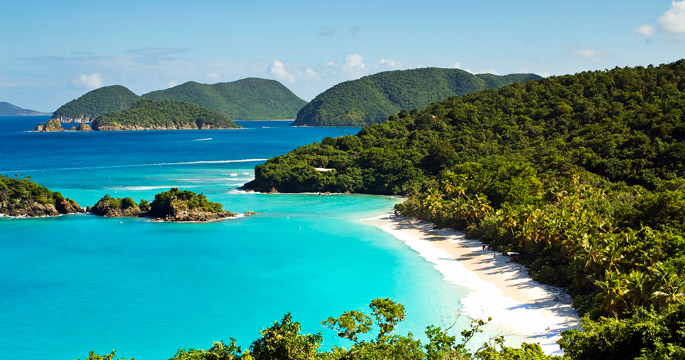
St. John’s Trunk Bay is considered one of the most beautiful beaches in the Caribbean. Just beyond the white sands, a guided snorkel trail leads through coral gardens. Photo: David Coleman/iStock
2 Invitation to Party
This small island throws a big party. The St. John Festival is a month-long event that combines the traditions of Carnival with celebrations of emancipation and independence. The party kicks off in early June when the sounds of steel pan bands fill the air at Franklin Powell Park. The next 30 days are filled with races, regattas, pageants, concerts, food fairs and the opening of a Festival Village. The celebration culminates in observations of Emancipation Day on July 3, and a parade and fireworks on the Fourth of July.
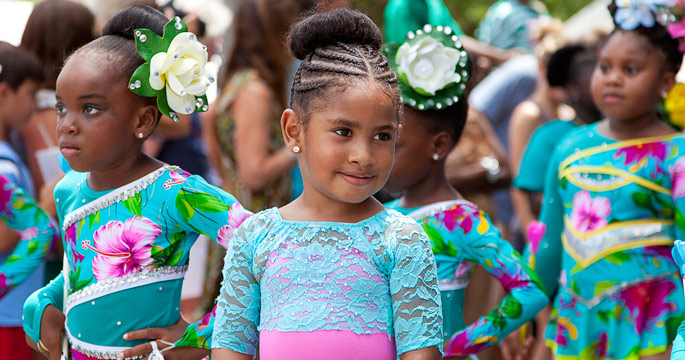
A children’s troupe takes part in the annual Fourth of July parade during St. John’s month-long festival and carnival that includes food, music, dance and pageantry. Photo: Christian Wheatley/iStock
3 Limin’ Time
On St. John, happy hour starts early and runs late. Judging by the number and variety of bars that dot the island, you might think drinking was the national pastime. But libations are typically enjoyed at a causal pace known as Limin’, which is more social event that indulgence. Cruz Bay is home to an ongoing meet up that moves from bar to bar, while on the other side of the island at Coral Bay, locals gather to play darts, watch sports and grab a bite. Favorites are the lobster rolls at the Tourist Trap or burgers at Woody’s back in town.
4 Sweet Memories
During the Danish colonial times, the island was dotted with sugar plantations and the stone windmills that crushed cane into valuable syrups. The cane fields have long since returned to forest, but remnants of fallen mills are found throughout the island. One of the largest and best-preserved mills can be found at Annaberg Plantation, where the stonewalls of the tallest mill in the Virgin Islands still stands. At Zozo’s, the shell of another 18th- century sugar mill overlooking Caneel Bay Resort has been incorporated into a hilltop restaurant that combines elegant dining with sweeping island views.
5 Where the Action Is
The seaside village of Cruz Bay is the hub of island activity. The town ferry dock is the link to the outside world, with boats constantly arriving and departing for St. Thomas and the British Virgin Islands. Just steps away is a lively downtown filled with an eclectic mix of small shops, restaurants and bars. Nicknamed “Love City,” Cruz Bay puts out a welcoming and carefree vibe, where backpackers and sailors mingle with escaped Wall Street executives and the good times flow freely into the streets.
6 Live Like a Local
If hotels aren’t your thing, St. John is your island. With more than 500 private homes, villas and condos in the rental pool, vacation stays in private residences is the island norm. Many properties provide ocean views from elevated decks, and include private pools. Couples, families and groups have a range of choices from intimate bungalows to six-bedroom compounds set on lushly landscaped grounds.
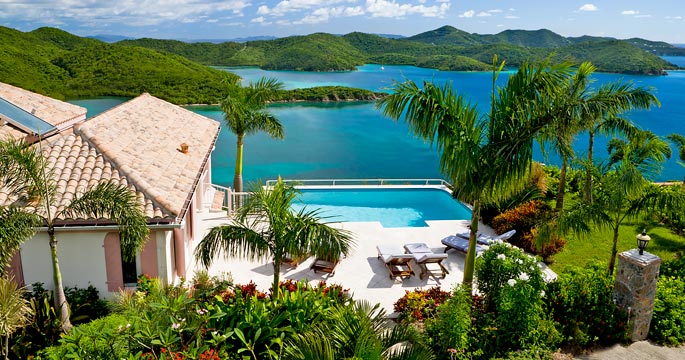
Many of the hillside residences scattered across St. John are available for rent, providing a more personal and private vacation experience for families and groups. Photo: Christian Wheatley/iStock
7 Free Roamers
In keeping with the island spirit, animals often roam free. It’s not unusual to see mama hen walking down the streets of Cruz Bay with chicks in tow. On the island’s east end, donkeys are often seen on rural roads as they make their way from field to field. Slow down or stop your car and they will come over and nudge you for a pat on the head or a snack. Keep your eyes peeled as you drive through the hilly countryside of the national park and you may catch a glimpse of the white tail deer that were originally brought to the island to be hunted, but now roam free and unmolested.
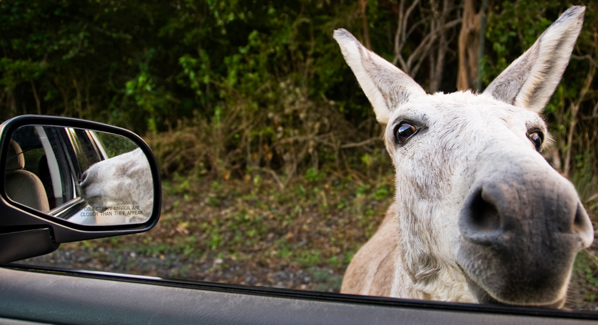
The wild donkeys that roam the fields and woodlands of St. John are descendants of plantation draft animals. They often approach humans in hopes of a snack or a nuzzle. Photo: Kirsten Hammelbo/iStock
8 A Day in the Park
Thanks to Laurence Rockefeller, almost three quarters of St. John is now a national park. In 1956, the famous philanthropist donated some 5,000 acres to the Federal Government, and subsequent land donations have increased the park’s holdings to more than 7,200 acres. In addition to harboring some of the most scenic beaches in the Caribbean, the park offers 22-well marked hiking trails that provide everything from easy half-hour strolls through wooded valleys to all-day hikes to remote hilltops and deserted beaches. Popular hikes include Reef Bay Trail and Ram Head Trail, which provide dramatic sea views.
9 The World Below
The gin clear waters that surround the island invite immersion. The best snorkeling is at Trunk Bay, where an underwater snorkeling trail has been laid out and managed by the National Park Service. Here, markers and identification plaques lead you through coral gardens filled with tropical fish. The site is popular, and can become crowded at times, but is well worth the visit. Among the less visited yet very snorkel worthy sites along the north coast are Hawksnest Beach, Maho Bay Beach and Cinnamon Bay Beach where you can spend an entire day underwater.
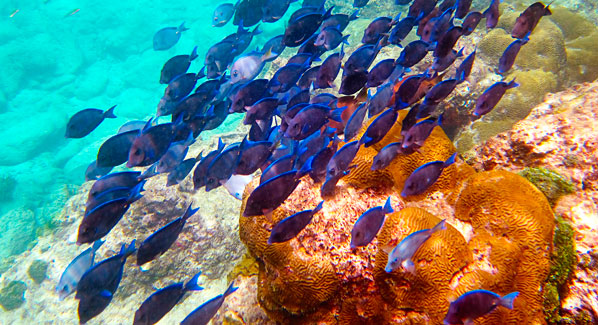
Coral reefs lie just offshore of many St. John beaches. Protected by national park status, these reefs sport colorful growths of sea fans and swirling schools of tropical fish. Photo: iStock
10 Day Tripping
Cruz Bay is the jumping off point for day trips to other islands. In addition to connecting to St. Thomas, ferries run to destinations in the British Virgins, including the capital of Tortola and the beaches of Jost van Dyke. A wide range of private boats can also be chartered for bar hopping trips to Jost van Dyke, snorkeling trips to Sandy Cay and day sails to the many small islands nearby.

